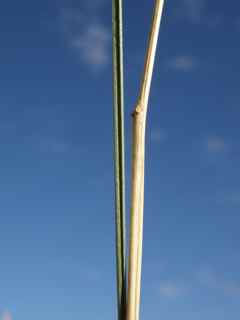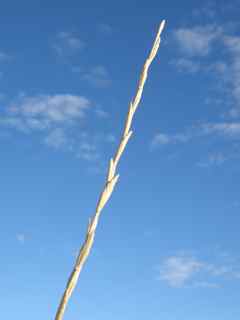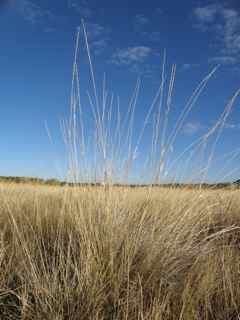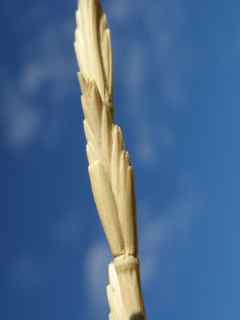|
|
 Blade Willow LakeSue Smith |  Seedhead Willow LakeSue Smith |  Seedhead Willow LakeSue Smith |  Spikelet Willow LakeSue Smith | | |
|
| | |
Origin: Introduced Season: Warm
Habitat Description: Found in disturbed, often wet, alkaline areas.
Plant Communities:Riparian, Disturbed Areas
Elevation: Below 6000 feet
Desc:
Tall, wide, densely clumped grass with erect seedhead stems. It has been planted along roadsides for stabilization. It is one of the most saline tolerant grasses commercially available.
Identification Notes: Densely clumping perennial. Sheaths hairy on lower margins. Auricles less than 1/16 inch long. Blades rolled longitudinally, with ribs on upper surface. Seedhead erect, to 16 inches long. Spikelets one per node, 5 to 18 florets. Glume veins about equal.
Grass Type: Perennial bunchgrass Rhizomes: N Stolons: N
Large Dense Clump (> 2 feet): Y Bushy (highly branched): N
Height with Seedheads: Greater than 36 inches
Seedhead Structure: Unbranched Seedhead Droops: N
Flowering Period: Jun - Jul
Number of Flowers per Spikelet: Multi-flowered Spikelets One-sided: N
Awns: Absent Three Awns: N Awns Bent: N
Flower and Seedhead Notes: Elongate robust seedhead stems, 14 to 30 inches long. Spikelets one per node, elliptic to oblong, 5 to 18 fertile florets, diminished florets at the apex, laterally compressed. Glumes blunt.
Blade Hairy:
Y
Blade with White Margins:
N
Blade Cross section:
Convolute
Blade Notes:
Blades 8 to 18 inches long, thin, and stiff. Leaf blade surface ribbed. The blades are often covered with short stiff hairs making them rough to the touch.
Sheath Hairy:
Y
Tuft of Hairs at top of Sheath or Collar:
N
Ligules:
Membranous
Auricles (Ear-like lobes at collar area:
Y
Forage Value:
Good. Tall wheatgrass is most palatable during the early spring months and should be managed during this time. If not, old coarse growth may inhibit grazing the following year. It must be grazed heavily to maintain plants in the vegetative state.
|
|